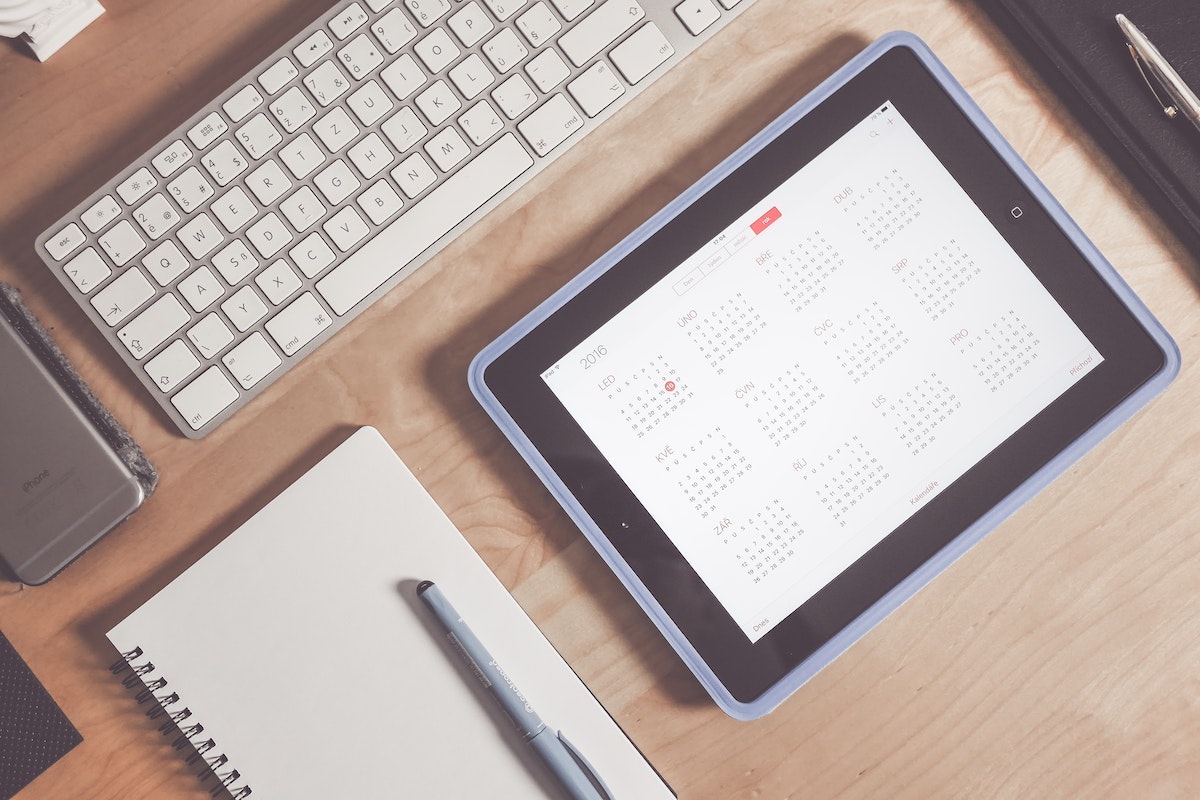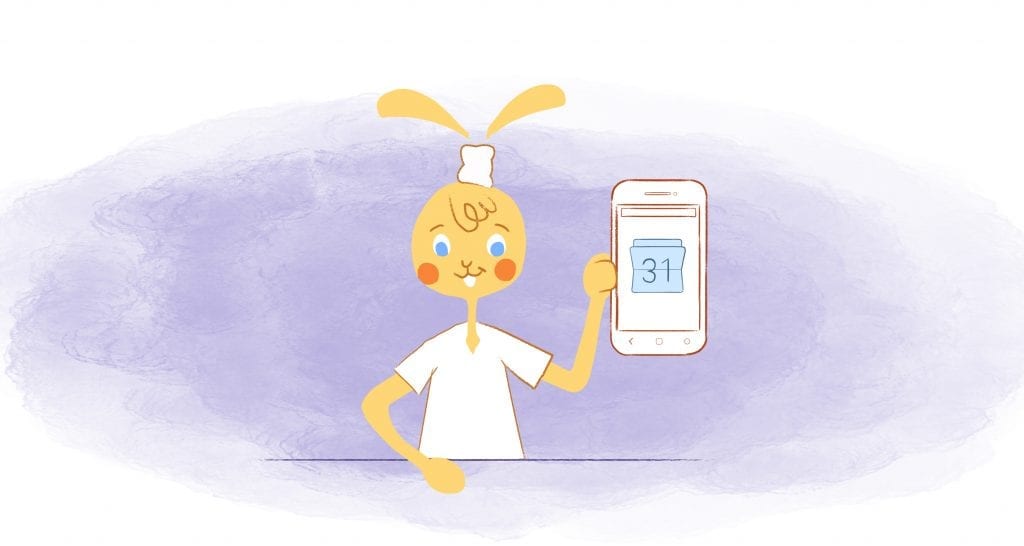

When it comes to time management, 88% of people don’t use a proper system. Instead, they use a paper and digital calendar, an email inbox, and a to-do list.
There’s nothing wrong with that. After all, a calendar can be an indispensable tool for managing your time, But, what’s better, a digital or paper calendar? There is no right or wrong answer. Ultimately, it’s whatever works for you.
There’s no need to take an ‘either/or’ approach. Digital calendars are more efficient than paper calendars, and some people who reject digital calendars have never used pen-and-paper planners.
Luckily, there’s a middle ground. And that’s combining your paper and digital calendars. But, to make that work, you need to know how to manage your time using these two types of calendars.
Understand the purpose of each calendar.
Using your online calendar, you can schedule meetings and tasks, as well as schedule consultations and deep work. Digital calendars are also sharable, so you can keep your team updated on what’s happening. As a result, appointments will be digitized, processes streamlined, and people will be kept updated.
Picking a calendar app starts with choosing the cloud service you’ll use to synchronize them. The Apple ecosystem provides iCloud, for example, if you’re fully committed to Apple. For cross-platform compatibility, Google Calendar is a good option.
What about your paper calendars, like planners or wall calendars? Depending on the type of analog calendar you want to create, you will need different tools.
Generally, you can jot down notes and reminders — but you need to keep all that stuff in one place — not left all over the place where you can’t find them. But that’s not all. Planners can also be used to make plans and keep personal information separate. In other words, it’s a paper calendar is more personal than a shared calendar. For example, if you have to write down a reminder to contact your veterinarian (and it won’t happen if you don’t), you’ll need to have this on a separate calendar.
Identify your preferred method of working.
If you want to combine an online calendar and a planner, you must know what works for you and what doesn’t. For example, you may have figured out that it’s useless to put personal details on your online calendar unless your team needs to know or in case that you’re away.
Also, certain processes in the brain have been linked to improved memory recall when something is written down physically. This is why an online calendar may not work as a reminder to call your veterinarian — but your paper planner will.
There must be a place to easily find all your notes, whether they are ideas, reminders, or notes about running your business. It could also help you remember things and recommit to your goals.
Set up a master calendar.
It is important to designate one calendar as your master calendar whenever you coordinate multiple calendars. Why? The truth is found in it. In a sense, the other calendar could be compared to being its apprentice.
I recommend that you make your digital calendar the master and make paper the apprentice for most people. As your schedule becomes clearer as the future becomes the present, you can use your digital calendar to schedule repeating events, coordinate with others, and make quick changes.
Moreover, your digital calendar shows your schedule in full view. This includes what you’ll do today, next week, or even a year from now. You will want this calendar to set all appointments.
Your paper calendar? This is your daily companion. You can execute your day and capture new information with it.
Incorporate your online calendar into your planner.
In your daily or weekly planning, transfer upcoming appointments to your paper calendar from your digital calendar. Taking this step allows you to review your commitments and determine whether you can meet them. No worries if they don’t. Any commitments you need to renegotiate should be done. On your paper calendar, you’ll find the rest.
It’s optional to write down every detail. However, besides the title, you only need the start and stop times. As a result, this keeps your calendar from becoming too cluttered.
Additionally, you can use your calendar to receive time-to-leave alerts and directions. However, you will still have to use your phone for those things.
If you have made, moved, or canceled any appointments, update your digital calendar. Moreover, before focusing on your upcoming activities, you should recap the day or week behind you during your daily or weekly planning.
Keep a task list and update it regularly.
Using task lists, you can use both platforms. The more information I can put into my calendar when I receive an invitation digitally, the better. The time, place, and people involved are all listed.
After organizing your online calendar online, convert it into a paper calendar. When you write down your tasks, you are more likely to complete them because they reinforce your commitment.
Everything should be color-coded.
Visual learners will benefit from this tip. Using color coding, you can differentiate home tasks from work responsibilities, main priorities from lesser priorities, etc. Digital planners take advantage of this feature and allow you to see the day, week, and month at a glance.
Additionally, you can use different colored markers or highlighters to separate your duties.
Set up alerts and notifications.
If you usually write down reminders, plug this data into your smartphone at the same time. With push notifications, you can remember things just as you would with handwritten notes. However, you will never miss an appointment or meeting if you create this habit.
A digital calendar typically includes alarms, reminders, and notes. So, as long as this info is in your digital calendar, you’re good to go.
Have a ritual.
If you use a digital/paper hybrid calendar system, what’s the biggest mistake you make? A failure to keep the calendars in sync.
In this case, appointments, action items, and notes are jotted down in your paper calendar but not in the digital one.
For a hybrid system to work, there must be one master calendar. To do that? Ensure they have the correct appointments and events list.
You might end up not trusting either calendar and finding yourself checking multiple places, which eventually becomes overwhelming.
To ensure they are in sync, have a ritual. What is the easiest way to accomplish this? You can make it a habit to transfer anything relevant from one calendar to another each morning or evening.
Your evening routine can include going through your paper notebook and taking note of any action items. In addition, you can use this as an opportunity to review your analog calendar or notebook for what needs to be captured since the last review.
If you have any time-sensitive information in your digital planner, ensure it is included.
New tasks or items should also be added to your to-do list app or notebook.
Keeping track of all your appointments and deadlines is easy with a master calendar. By doing so, you will no longer feel like you’re forgetting something or getting caught off guard.
FAQS
1. What’s the difference between digital and paper calendars?
Using digital planners versus paper planners primarily depends on their format. Digital planners are virtual and accessed through a device, while paper planners are physical and tangible.
2. What are the pros and cons of paper calendars?
Some of the advantages of paper calendars include the following:
- A physical experience. Writing by hand may help people remember information more easily and process it better.
- Batteries and power are not required. Because paper planners don’t require a power source, they can be used anywhere and anytime.
- You can use it offline. It is possible to use a paper planner without an internet connection.
- Keeping digital distractions to a minimum. Digital devices, notifications, and emails can cause distractions. Paper planners can help reduce these distractions.
- Expressiveness. Individuals can express themselves creatively by drawing, taking notes, or by simply enjoying the feel of pen on paper when planning on paper.
However, there are also disadvantages to know:
- Space is limited. It is difficult to find important information in paper planners because of the limited writing space and cluttered nature.
- Editing is more difficult. With a paper planner, it can be difficult to correct a mistake or update information if a schedule changes.
- Inconvenient to transport because it is bulky. Compared to digital planners on a smartphone or tablet, paper planners can be bulky and heavy.
- There are no alarms or reminders. Planners without alarms or reminders can make it harder to stay on top of appointments and tasks.
- Sharing isn’t as easy. In contrast, digital planners can be easily shared and accessed by multiple users, while paper planners can be difficult to share.
- Accessibility may be restricted. When you are not in the office or at home, it is hard to access information on paper planners.
3. What are the pros and cons of digital calendars?
Let’s look at digital calendars’ pros:
- Accessible from anywhere. The convenience of updating and viewing your schedule no matter where you are is made possible by digital planning apps, which can be accessed from multiple devices, such as a smartphone, tablet, or laptop.
- Easily customizable. With digital planners, you can customize your planner by choosing different color schemes, fonts, and layouts.
- Updates and edits are easy to do. Adding new tasks and rescheduling appointments is easy with digital calendars.
- Reminders and alarms. Keep track of important tasks and appointments with digital planners that let you set alarms and reminders.
- Shareable. For group projects or shared calendars, digital planners make a great option since they are easily shared and accessed.
- It’s better organized. It is often easier to find specific tasks or appointments with digital planners because they can categorize and filter information.
- Eco-friendly. Paper, ink, and printing materials are not required with digital planners, making them environmentally friendly.
Here are the drawbacks of digital calendars as well.
- Requires a power and internet connection. If you don’t have power and internet, you won’t be able to use a digital planner.
- It is possible to lose data. You might lose all your data if you lose, steal, or damage your electronic devices.
- There’s a learning curve. There may be some people who have difficulty learning how to effectively and efficiently use a digital calendar.
- Offline use is limited. Using digital planners requires an internet connection, making it difficult to use in areas without one.
4. Are paper or digital planners better for business owners, managers, and entrepreneurs?
There’s no right or wrong answer regarding paper planners or digital calendars. It depends on your preferences and needs. When you’re constantly on the go and need access to your schedule from multiple devices, a digital planner can be more convenient. Additionally, they often have more functions, such as calendar syncing and task management, which can be helpful when managing a busy schedule.
Paper planners, however, can be helpful for those who prefer the tactile experience of writing by hand and find that it helps them to remember information better. Individuals who like to express themselves creatively can also personalize and decorate them.
For those who need task management and scheduling tools but also need note-taking and brainstorming tools, a combination of both may be the best calendar option.
Featured Image Credit: Photo by picjumbo.com; Pexels; Thank you.











Deanna Ritchie
Editor-in-Chief at Calendar. Former Editor-in-Chief and writer at Startup Grind. Freelance editor at Entrepreneur.com. Deanna loves to help build startups, and guide them to discover the business value of their online content and social media marketing.